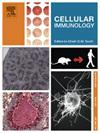Hyperoside suppresses NSCLC progression by inducing ATG13-mediated autophagy and apoptosis
IF 2.9
4区 医学
Q2 CELL BIOLOGY
引用次数: 0
Abstract
Background
Lung cancer is a leading cause for cancer–related mortality across the globe. In the last decade, significant advancements have been made in the research of non-small cell lung cancer (NSCLC). However, new biotherapeutic drugs urgently need to be developed. This study investigated the regulating effect of hyperoside on NSCLC progression.
Methods
The colony formation assay and Cell Counting Kit-8 were used to detect cell proliferation. The Transwell assay was used to monitor cell migration. NSCLC growth in vivo was examined using a subcutaneous xenograft model. Proteomics, immunohistochemistry, and immunofluorescence analyses were used to detect anticancer regulatory mechanisms.
Results
The results showed that hyperoside treatment inhibited cell migration, proliferation, and tumor growth in NSCLC in vivo and in vitro. Also, hyperoside treatment promoted apoptosis and cell cycle S-phase arrest. Proteomics, immunohistochemistry, and immunofluorescence detection also showed that hyperoside treatment promoted autophagy-related protein 13 (ATG13)-mediated autophagy, which further increased NSCLC apoptosis.
Conclusion
In summary, the findings illustrated that hyperoside treatment suppressed NSCLC progression by promotingATG13 expression and enhancing autophagy activation, finally promoting autophagy and apoptosis.
金丝桃苷通过诱导atg13介导的自噬和凋亡来抑制NSCLC的进展
背景肺癌是全球癌症相关死亡的主要原因。近十年来,非小细胞肺癌(NSCLC)的研究取得了重大进展。然而,迫切需要开发新的生物治疗药物。本研究探讨金丝桃苷对NSCLC进展的调节作用。方法采用菌落形成法和细胞计数试剂盒-8检测细胞增殖。Transwell法监测细胞迁移。采用皮下异种移植模型检测非小细胞肺癌在体内的生长情况。蛋白质组学、免疫组织化学和免疫荧光分析用于检测抗癌调节机制。结果金丝桃苷在体内和体外均能抑制非小细胞肺癌细胞的迁移、增殖和肿瘤生长。此外,金丝桃苷处理促进细胞凋亡和细胞周期s期阻滞。蛋白质组学、免疫组织化学和免疫荧光检测也显示,金丝桃苷处理促进了自噬相关蛋白13 (autophagy-related protein 13, ATG13)介导的自噬,进一步增加了NSCLC的凋亡。综上所述,金丝桃苷治疗通过促进atg13表达,增强自噬激活,最终促进自噬和细胞凋亡,从而抑制NSCLC的进展。
本文章由计算机程序翻译,如有差异,请以英文原文为准。
求助全文
约1分钟内获得全文
求助全文
来源期刊

Cellular immunology
生物-免疫学
CiteScore
8.20
自引率
2.30%
发文量
102
审稿时长
30 days
期刊介绍:
Cellular Immunology publishes original investigations concerned with the immunological activities of cells in experimental or clinical situations. The scope of the journal encompasses the broad area of in vitro and in vivo studies of cellular immune responses. Purely clinical descriptive studies are not considered.
Research Areas include:
• Antigen receptor sites
• Autoimmunity
• Delayed-type hypersensitivity or cellular immunity
• Immunologic deficiency states and their reconstitution
• Immunologic surveillance and tumor immunity
• Immunomodulation
• Immunotherapy
• Lymphokines and cytokines
• Nonantibody immunity
• Parasite immunology
• Resistance to intracellular microbial and viral infection
• Thymus and lymphocyte immunobiology
• Transplantation immunology
• Tumor immunity.
 求助内容:
求助内容: 应助结果提醒方式:
应助结果提醒方式:


